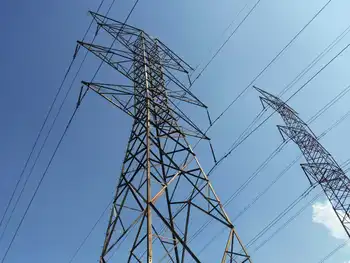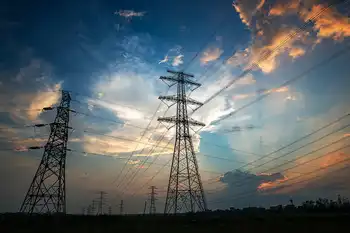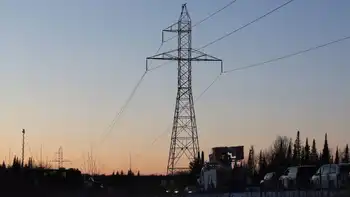GreenVolts Signs Utility Deal
By Fortune
CSA Z462 Arc Flash Training - Electrical Safety Essentials
Our customized live online or in‑person group training can be delivered to your staff at your location.

- Live Online
- 6 hours Instructor-led
- Group Training Available
Avista (AVA), based in Spokane, Washington, will also make a "strategic investment" in GreenVolts. The terms of the deal were not disclosed. GreenVolts has developed a high concentration photovoltaic technology that features microdishes that track the sun and focus its rays on small but highly efficient solar cells. Rotating platforms hold 176 of the dishes.
GreenVolts 1-to-20-megawatt power plants are designed to be placed near cities or utility substations to provide electricity during peak demand without the need for new transmissions lines or other infrastructure that often must be built for large-scale solar power plants located in the desert. In other words, GreenVolts offers a plug-in power plant designed to save utilities from having to crank up fossil-fueled power stations to provide electricity when demand soars in the afternoon.
GreenVolts is Exhibit A in how renewable energy mandates are creating opportunities for startups to break into the Big Power business. Founded in 2005 by Internet marketing veteran Bob Cart, GreenVolts is located in downtown San Francisco's "green grid" - it's a short stroll from the GreenVolts office to companies like utility PG&E (PCG) and solar financier MMA Renewable Ventures (MMA).
GreenVolts got its first big boost when it was named a winner of the California Clean Tech Open startup contest, scoring a $120,000 package that included office space from PG&E. That opened doors in Silicon Valley and allowed Cart to raise $1.5 million in seed financing as well as attract John Woolard, CEO of utility-scale solar power company BrightSource Energy, to his board.
When Green Wombat first interviewed Cart, GreenVolts had just moved into its new offices and the bare-bones decor was pure startup. "We plug in directly to distribution system rather than being far away from the loads using the transmission grid," says Cart, 42. "And that means we donÂ’t have to pay the cost of transmission and donÂ’t have the losses and environmental impact of desert-sited systems."
Of course, GreenVolts will only score contracts with utilities if its plug-in power plants can produce electricity at competitive - or near competitive - rates. The key to doing that is the company's technology, according to Cart. He disappears and returns carrying a prototype of the GreenVolts microdish. It's about the size of an overhead projector - remember those? - and features a curved mirror that faces a module holding a tiny solar cell about the size a cameraphone lens.
GreenVolts licensed the mirror technology from Lawrence Livermore Laboratories.
"It gives us a mirror that is low-cost to produce, is highly reflective and highly durable," says Cart. The design allows the sun to be intensely concentrated on the solar cell, which is made by Boeing's (BA) Spectrolab subsidiary and is the world's most efficient at converting photons into electrons. The dish contains an automated pressure washing system, which keeps mirror clean and thus its efficiency high while reducing maintenance costs. The off-axis design prevents shade from falling on the dish when the sun is directly overhead.
Cart tapped the expertise of a cadre of engineers to help design the GreenVolts system, paying them in stock. GreenVolts' manufacturing VP is the CEO of Spokane fabrication company Ecolite, which is performing the mechanical design and assembly of the dishes and platform, which GreenVolts calls a CarouSol.
The company is negotiating a second power plant deal with a large utility Cart declined to identify. He says GreenVolts already has signed a lease for farmland that will be the site of a power plant and plans to be in production by June 2008. That gives Cart less than a year to perform all the testing and validation to ensure his technology delivers on its promise.
"ItÂ’s answering the question of how do you prove this will work for 20 years in a year," he says. "With a yearÂ’s worth of testing how do you tell itÂ’s going to last for 20. ThatÂ’s a challenge. We think we have good answers for that. We think we have the right idea, we think we have a way to get this off the ground and we think the demand for it is going to be phenomenal."











